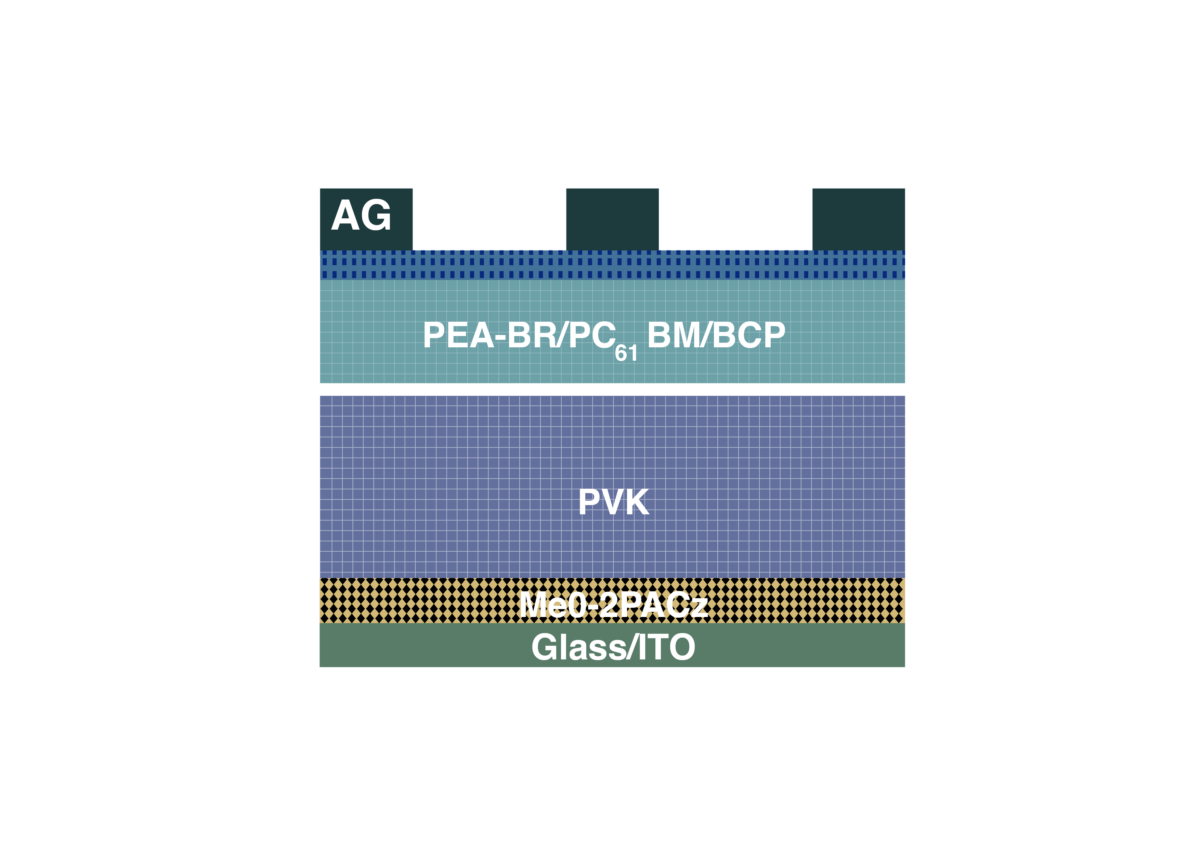A group of scientists led by Jiaxing University in China has developed an inverted perovskite solar cell based on a hole transport layer (HTL) with a self-assembled monolayer (SAM).
Inverted perovskite cells have a device structure known as “p-i-n”, in which hole-selective contact p is at the bottom of intrinsic perovskite layer i with electron transport layer n at the top. Conventional halide perovskite cells have the same structure but reversed – a “n-i-p” layout. In n-i-p architecture, the solar cell is illuminated through the electron-transport layer (ETL) side; in the p-i-n structure, it is illuminated through the HTL surface.
“The HTLs prepared with SAM materials not only have negligible parasitic absorption, low material consumption, and stable adhesion but also exhibit inherent passivation of defects on the bottom of perovskites,” the research team explained.
The researchers used two molecules known as 2-mercaptoimidazole (2-MeIM) and 2-Mercaptobenzimidazole (2-MeBIM) as additives for the HTL. According to them, these molecules interact with the phosphonate groups in the so-called MeO-2PACz, which is also known as [2-(3,6-Dimethoxy-9H-carbazol-9-yl)ethyl]phosphonic acid, inhibiting the aggregation of MeO-2PACz by forming a supramolecular structure, which in turn results in a more homogeneous HTL.
The academics designed the cell with a substrate made of glass and indium tin oxide (ITO), a MeO-2PACz layer, the perovskite absorber, a phenylethylammonium bromide (PEA-Br) cation, an electron transport layer based on based phenyl-C61-butyric acid methyl ester (PCBM), a bathocuproine (BCP) buffer layer, and a silver (Ag) metal contact.
Popular content
They tested the performance of the cell under standard illumination conditions and compared it with that of a reference cell without the additives. The champion solar cell treated with the additives achieved a power conversion efficiency of 24.38%, an open-circuit voltage of 1.181 V, a short-circuit current density of 24.43 mA cm−2, and a fill factor of 84.51%. The control device reached an efficiency of 23.12%, an open-circuit voltage of 1.166 V, a short-circuit current density of 24.09 mA cm−2, and a fill factor of 82.32%.
“Benefitting from the better energy alignment of the target film, the HTL with additives showed better charge carrier extraction capability,” the academics explained. “The improved properties of the additive-introduced HTLs, such as better homogeneity, enhanced conductivity, and more aligned energy bands, and the improved quality of the bottom of the perovskite films featuring a larger grain size with low defects, together promote the more efficient charge transfer and the suppressed non-radiative recombination energy loss at the interface, leading to the boosted performance of the perovskite solar cells.”
The cells treated with the additives were also able to retain over 89% of their initial efficiency after 450 h, while the reference cell reached a value of only 74%. This was due to the higher quality of the perovskite film in the treated cells, which the group said minimizes their vulnerability to external and internal attacks.
The novel cell concept was introduced in the study “Synchronous modulation of hole-selective self-assembled monolayer and buried interface for inverted perovskite solar cells,” published in Cell Reports Physical Science.
This content is protected by copyright and may not be reused. If you want to cooperate with us and would like to reuse some of our content, please contact: editors@pv-magazine.com.



By submitting this form you agree to pv magazine using your data for the purposes of publishing your comment.
Your personal data will only be disclosed or otherwise transmitted to third parties for the purposes of spam filtering or if this is necessary for technical maintenance of the website. Any other transfer to third parties will not take place unless this is justified on the basis of applicable data protection regulations or if pv magazine is legally obliged to do so.
You may revoke this consent at any time with effect for the future, in which case your personal data will be deleted immediately. Otherwise, your data will be deleted if pv magazine has processed your request or the purpose of data storage is fulfilled.
Further information on data privacy can be found in our Data Protection Policy.